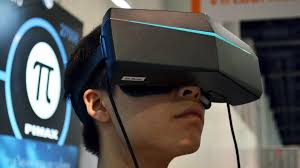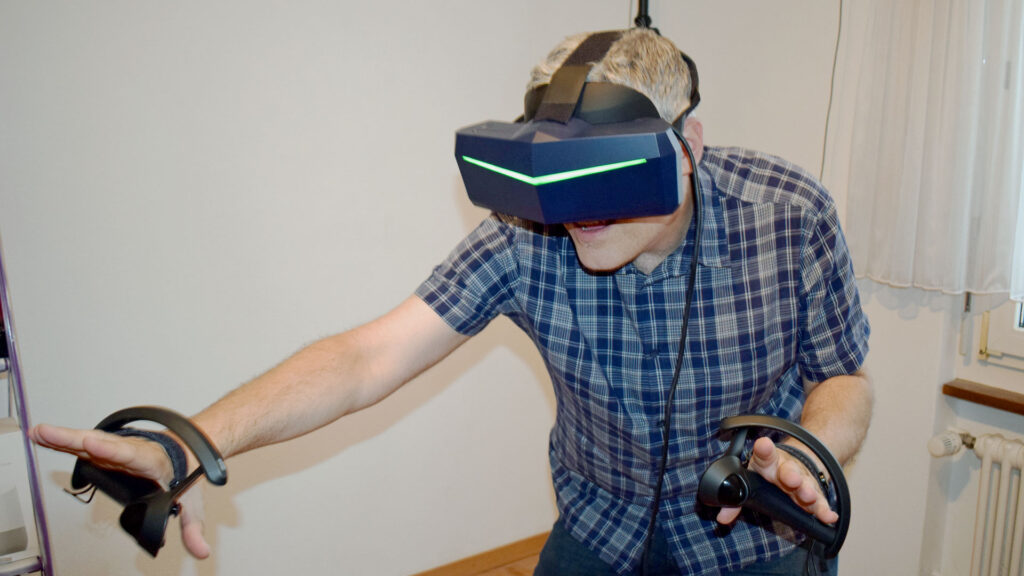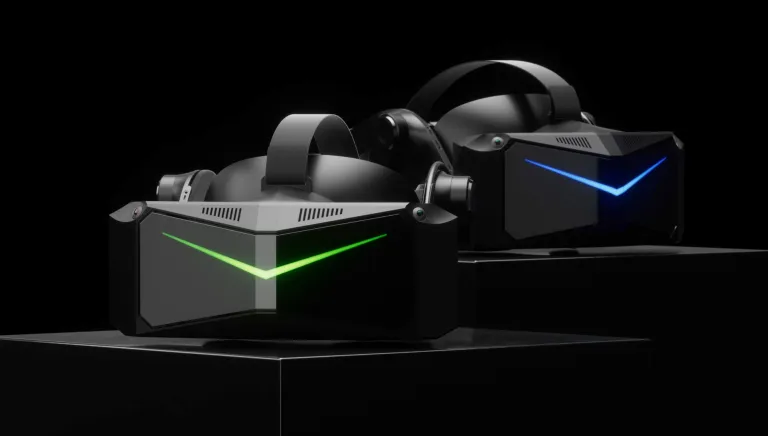
8K VIRTUAL REALITY
INTRODUCTION:

8K virtual reality (VR) refers to VR systems or headsets that offer an ultra-high-definition resolution of 8,000 pixels horizontally (8K resolution). This is a significant leap in visual clarity compared to standard 4K (3840 x 2160 pixels) and Full HD (1920 x 1080 pixels) displays, and it offers an even more immersive experience.
KEY ASPECTS OF 8K VK:
Resolution: 8K VR provides a resolution of 7680 x 4320 pixels. This means a much sharper and more detailed visual experience, reducing the “screen door effect” (visible gridlines between pixels) that can occur in lower-resolution VR headsets.
Immersion: With higher resolution, the experience feels more lifelike. The clarity of textures and environments in VR becomes incredibly detailed, making it feel as if you’re truly present in a virtual world.
Performance: To run 8K VR content, powerful computing hardware is required. High-end graphics cards, processors, and storage solutions are necessary to ensure smooth and realistic experiences, as rendering VR at 8K is resource-intensive.
Visual Comfort: With higher resolution, the visual fidelity improves, which can reduce eye strain and fatigue in longer VR sessions. The greater pixel density makes the visuals appear more natural, which is critical for long-term use.
Content: Currently, content specifically made for 8K VR is still limited, and it requires significant bandwidth for streaming or storage. However, advancements in both VR hardware and 8K content creation are increasing.

WORKING OF 8K VR:
. Display Technology:
- Resolution: The core feature of 8K VR is the display resolution of 7680 x 4320 pixels. This is delivered through high-definition OLED, LCD, or microLED screens, which are built into VR headsets.
- The pixels are arranged in a way that allows for a high pixel density, providing crisp visuals. This density ensures that you don’t see the pixel grid when looking at the VR display, making the environment feel more realistic.
2. Optics and Lenses:
- VR headsets use specialized lenses to focus the 8K display at a comfortable viewing distance and angle, effectively expanding the user’s field of view (FOV).
- These lenses ensure that the user sees the 8K resolution correctly without distortion, making the experience more immersive and lifelike.
3. Processing Power:
- High-end graphics cards and processors (such as NVIDIA RTX series or similar) are crucial for rendering 8K content smoothly. VR rendering requires real-time processing of immersive environments, and this becomes exponentially more complex at 8K resolution.
- The system must render at 60 Hz or higher to maintain fluidity in the virtual environment, which means the processing system must handle billions of pixels every second.
ADVANTAGES OF 8K VR:
Increased Visual Clarity
- Sharper Details: With 8K resolution (7680 x 4320 pixels), VR environments are incredibly detailed. This reduction in pixelation leads to a more realistic and immersive experience, as you won’t see the “screen door effect” (visible gridlines between pixels), which is more common in lower-resolution headsets.
- Enhanced Texture Quality: High resolution allows for finer textures to be visible, making everything from skin textures in VR avatars to the smallest details in virtual landscapes more lifelike.
2. Improved Immersion
- Realistic Environments: The clarity and detail that 8K provides makes virtual worlds feel much more “real.” This increased immersion is crucial for applications in gaming, simulations, training, and entertainment, making users feel like they are truly present in a virtual space.
- Depth of Field: The improved resolution helps with a better sense of depth, so objects in the virtual world feel more three-dimensional and natural, enhancing spatial awareness.
3. Reduction in Motion Sickness
- Smoother Experience: With higher resolution and better rendering of virtual environments, the likelihood of motion sickness decreases. High-definition visuals, combined with accurate head-tracking, create smoother transitions and movements in VR, minimizing disorientation and nausea.
- Visual Comfort: Higher resolution reduces visible pixel grids, which can be a source of discomfort in VR experiences, leading to less eye strain during longer sessions.
4. Better Visual Realism for Various Applications
- Training & Simulation: High-detail visuals make 8K VR an ideal tool for industries like aviation, medical training, and military simulations, where accuracy and fine details are critical.
- Design & Visualization: For professionals in architecture, interior design, or engineering, 8K VR offers realistic visualizations of their work. Designers can walk through digital models with high clarity, making it easier to spot design flaws or make improvements.
- Movies and Entertainment: VR movies or interactive experiences benefit from 8K by delivering an experience closer to watching or interacting with real life. Film directors can create more immersive worlds, with clear details for every object and character.
5. Higher Pixel Density
- Enhanced Viewing Experience: Higher pixel density means that the display delivers more pixels per inch (PPI). This reduces the gap between pixels, making images sharper and enhancing the visual experience.
- Reduced “Screen Door Effect”: The increased pixel density eliminates the visible grid between pixels, which is common in lower-resolution VR headsets, leading to smoother, clearer visuals.
DISADVANTAGES OF 8K VR:
High Hardware Requirements
- Expensive Hardware: To run 8K VR smoothly, you need extremely powerful hardware, including high-end graphics cards (e.g., NVIDIA RTX 4090 or similar), fast processors, and large amounts of RAM. This significantly increases the cost of entry for users and can make VR setups much more expensive compared to lower-resolution systems.
- Performance Demands: 8K VR requires a lot of processing power to render the high-resolution content at a consistent frame rate (ideally 60 Hz or higher). Many current computers and VR systems may struggle to deliver a smooth experience without frequent frame drops, stuttering, or lag, which can detract from the immersive experience.
2. Limited Content Availability
- Scarcity of 8K Content: At present, there’s limited content available that fully supports 8K VR. While 8K resolution is available in some VR headsets, much of the content (games, videos, simulations) is still being created primarily in 4K or lower resolutions. This means that the user might not always experience the full benefits of 8K resolution.
- Content Creation Complexity: Producing 8K content is more expensive and time-consuming, as it requires high-quality 3D models, textures, and more intricate rendering techniques. This further limits the amount of 8K-ready content available.
3. High Bandwidth and Storage Requirements
- Data Intensity: 8K content requires massive bandwidth to stream or transfer. For wireless VR, this means needing high-speed connections like Wi-Fi 6 or 5G, which might not be available everywhere. Additionally, streaming 8K VR over the internet could result in latency or buffering issues, especially if the connection isn’t fast enough.
- Storage: 8K videos and VR experiences are extremely large in file size. Storing a significant amount of 8K VR content locally can quickly consume large amounts of hard drive space, making it a challenge for users with limited storage capacity.
4. Cost
- Expensive Equipment: The cost of acquiring an 8K VR headset and the required high-performance PC or console setup can be prohibitively expensive. For most consumers, this is a big deterrent. The price tag might not justify the benefits for those who don’t need the ultra-high resolution for specific applications.
- Frequent Upgrades: To keep up with the demanding nature of 8K VR, users may need to upgrade their hardware frequently, which adds to the long-term cost.

